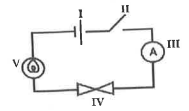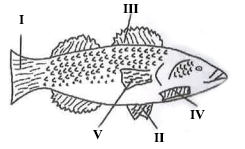1.
Which of the following substances is made up of only one kind of atom?
Iron
Salt
Steel
Water
2.
Ice is able to float on water because the ice is
colder than water.
denser than water.
has a greater mass for the same volume of water.
has a greater volume for the same mass of water.
3.
Which of the following statements about the state of matter is correct?
Molecules in a solid are disorderly arranged.
Solids are highly compressible.
Liquids have definite form and volume.
Molecules in a gas move faster than those in a liquid.
4.

The above diagram illustrates the structure of an atom. The components labeled X and Y are respectively
neutrons and shells.
ions and neutrons.
neutrons and nucleus.
nucleus and neutrons
5.
The force which opposes the motion of one object on another object is known as
friction.
gravity.
tension.
weight.
6.
When the brakes of a bicycle in motion are applied for a long time the wheels become hot. This is because of a change of energy from
kinetic energy to potential energy.
potential energy to kinetic energy.
potential energy to heat energy.
kinetic energy to heat energy.
7.
A man applied a force of 50 N to push a wheelbarrow through a distance of 6 m. Calculate the work done.
300 J
56 J
44 J
30 J
8.
In which of the following situations is work said to be done?
Walking with a load on the head in an upright position
Getting up from a chair
Pushing against a wall which does not move
Sitting still behind a desk
9.
The energy stored in food is
an electrostatic energy.
a chemical energy.
a solar energy.
a thermal energy.
10.
A machine which has an energy loss of 10% will have an efficiency of
100%
90%
55%
10%
11.
The figure below shows a simple electric circuit.
Use it to answer the question below.

The switch is represented by
IV
III
II
I
12.
The figure below shows a simple electric circuit.
Use it to answer the question below.

The component labelled V is a/an
ammeter.
battery.
lamp.
voltmeter.
13.
The figure below shows a simple electric circuit.
Use it to answer the question below.

The purpose of the component labelled IV is to
supply energy to the circuit.
measure the voltage of the battery.
prevent too much current from flowing.
close the circuit.
14.
Which of the following diseases is spread by a mosquito?
Blindness
Cholera
Dysentery
Elephantiasis
15.
The intermediate host of the worm that causes bilharzia is
man.
mosquito.
tsetse fly
water snail
16.
The figure below is a diagram of a fish.
Use it to answer the question below.

The function of the part labelled IV is to enable the fish to
sink in water.
absorb oxygen from the water.
protect itself from attack.
detect smell in water.
17.
The figure below is a diagram of a fish.
Use it to answer the question below.

The part labelled V is used for
balancing.
steering.
surfacing.
paddling.
18.
Which of the following arrangements is a probable food chain.
Grass → Grasshopper → Toad → Snake → Crow
Grasshopper → Grass → Goad → Lion → Man
Crow → Snake → Toad → Grasshopper → Grass
Grass → Goat → Lion → Man → Snake
19.
One disease which can be transmitted through eating half cooked meat is
guinea worm.
hook worm
thread worm.
tape worm.
20.
Which of the following characteristics are common to all living things?
I. Response to stimuli.
II. Respiration
III. Movement from place to place
IV. Grow
I and II only
I and III only
I, II and III only
I, II and IV only
21.
The part of sugar cane that is usually used for planting is the
corm.
leaf.
stem.
sucker.
22.
Excess carbohydrate in the human body is stored as
amino acid.
fatty acid.
glycogen.
glucose.
23.
Carbon dioxide in the blood is removed from the body through the
kidneys.
lungs.
mouth.
skin.
24.
The end-product of protein digestion is
amino acid.
glycerol.
glycogen.
peptide.
25.
The liquid component of the blood is known as
cytoplasm.
haemoglobin.
plasma.
platelets.
26.
Digested food substances are absorbed into the blood stream in the
kidneys.
liver.
stomach.
ileum.
27.
The part of the human ear which collect and direct sound waves is the
ear drum.
ear lobe.
ear canal.
semi circular canal
28.
The process by which waste substances are removed from the body is called
egestion.
excretion.
perspiration.
respiration.
29.
The embryo of a mammal develops from
eggs fertilized inside the body.
eggs fertilized outside the body.
self fertilized eggs.
only female sex cells.
30.
Which of the following gases is given out during photosynthesis?
Carbon dioxide
Carbon monoxide
Nitrogen
Oxygen
31.
The component of the soil which is made up of the finest particle is
clay.
humus.
loam.
sand.
32.
The soil type which is able to retain the highest amount of water is
loam.
gravel.
sand.
33.
The formation of humus is aided by
earthworms.
insects.
rats.
wind.
34.
The major cause of pollution at a stone quarry is
dust.
human waste.
acid disposal.
smoke.
35.
Ringworm is a skin disease, which is caused by
bacteria.
fungi.
insects.
worm.
36.
Which of the following habits will help in the control of diseases contracted through air?
I. Not throwing human wastes into rivers
II. Washing of hands after visiting the toilet
III. Not spitting about in public places
IV. Keeping foods always covered
I and II only
II and III only
III only
I, II and IV only
37.
Soup which is not well-heated gets spoilt when kept for sometime because the
salt in the soup is too small.
water in the soup do not all evaporate.
heat in the soup is not enough to kill all bacteria.
water condenses back into the soup.
38.
The measure of the amount of water vapour in the air is known as
cloud.
dew.
humidity.
temperature.
39.
Which of the following heavenly bodies is a star?
Earth
Moon
Sun
Milky way
40.
The planet in our solar system which has the largest orbit is
Jupiter.
Mars.
Pluto.
Venus.
a)
Classify each of the following substances as colloids, suspension or solution: Smoke, breast milk, powdered milk in water, sea water, mist, steel.
b)
i)
Define valency
ii)
State the valencies of the following elements and radicals:
α)
Iron
β)
Zinc
γ)
Hydroxyl
λ)
Carbonate
c)
Give one difference between plants and animals in terms of
i)
feeding
ii)
excretion
iii)
sensitivity
d)
i)
Draw and label a diagram to show how an image is formed in a pinhole camera.
ii)
State the characteristics of the image formed.
a)
State three differences between molecules in a solid state and liquid state.
b)
i)
What is a solution?
ii)
Differentiate between solutions and mixtures in terms of particle sizes.
c)
Name the elements which make up the following compounds:
i)
water
ii)
common salt
iii)
ammonia
d)
Copy and complete the table below
| Disease | Vector | Causative agent | Symptoms |
| Malaria | |||
| Sleeping sickness |
e)
i)
What is a man-made satellite?
ii)
Give two examples of natural satellites.
iii)
Mention two applications of man-made satellites
a)
Name the four main parts of a flower.
b)
Give two external features of plants pollinated by wind.
c)
Construct a food chain using any four of the organisms listed below.
Goat, lizard, bird, snake, earthworm, grasscutter, grass, ant, cassava
d)
i)
The energy input of a machine is 7.5 J and the output energy is 5.0 J.
Calculate the efficiency of the machine.
ii)
Explain why the efficiency of a machine is always less than 1.
a)
i)
What is an embryo?
ii)
Where does an embryo develop in the female mammal?
iii)
Describe briefly how a developing embryo breathes in oxygen.
b)
Name three plant nutrients.
c)
i)
What is an electrical insulator?
ii)
Explain how a comb rubbed vigorously on dry hair attracts small pieces of paper.
d)
i)
List the chemical substances that are used in the preparation of ammonia gas in the laboratory.
ii)
Write down balanced chemical equation for the reaction.